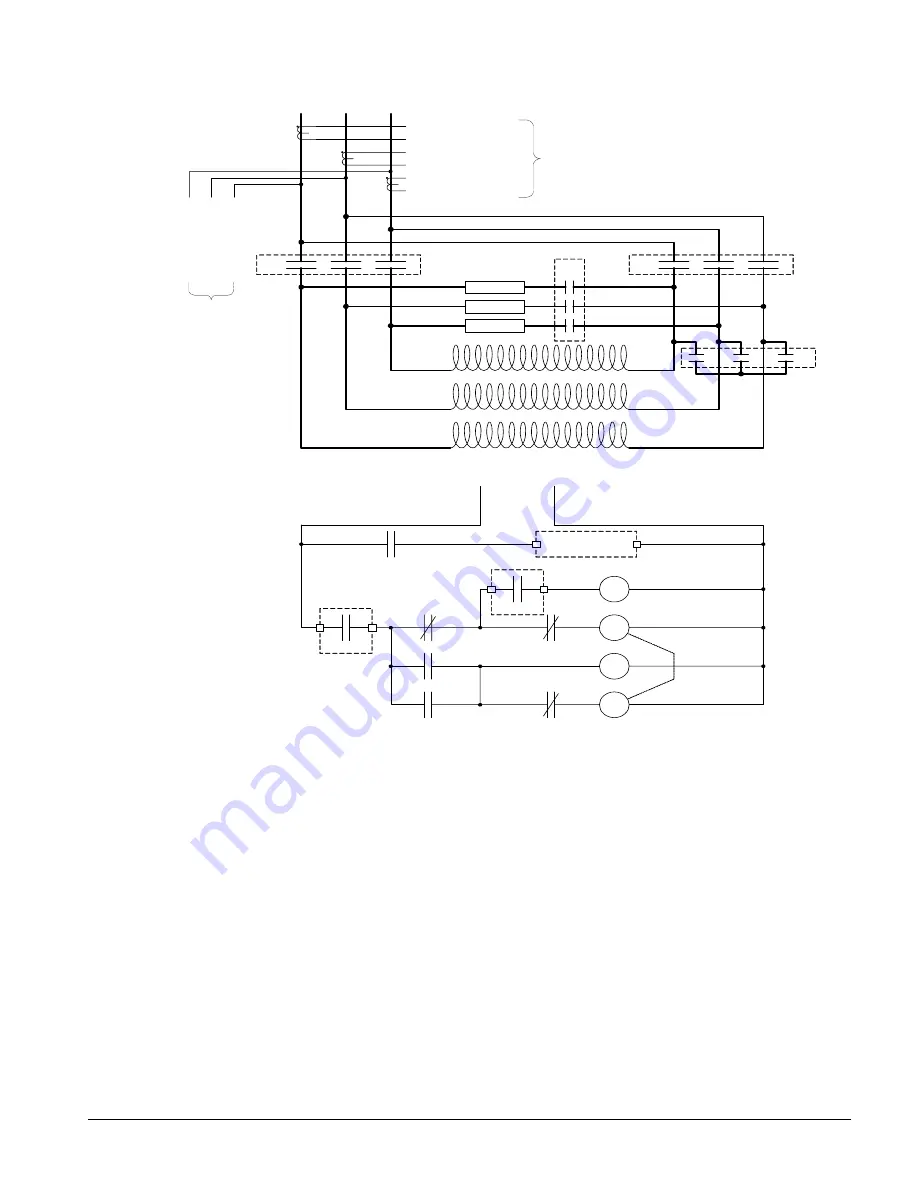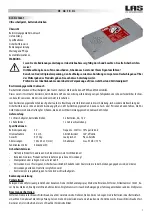
IOMM Starter
37
Figure 10, Wye Delta Motor Connection to the D3 Control
M echanical
Interlock
T1
T2
T3
T6
T5
T4
R esistor
R esistor
R esistor
1M
L1
L2
L3
2M
2S
1S
1S
2S
1M
2M
2S
C ontrol Pow er
2M
1S
1M
1S
R un
MX
U TS
M X
2M
M X
Input
C om m on
To TB3, C1+ (W hite W ire)
To TB3, C 2+ (W hite W ire )
To TB3, C 3+ (W hite W ire )
To TB3, C 1- (Black W ire)
To TB3, C 2- (Black W ire)
To TB3, C 3- (Black W ire)
C urrent Feedbacks
to M X
Li
ne
V
o
ltag
e &
F
req
uen
c
y t
o MX
To
TB
4
(S
C
R
1
) K
1
To
TB
6
(S
C
R
2
)
K
2
To
TB
8
(S
C
R
3
)
K
3
2M C onfirm
The closed transition resistors generally are sized to be in the circuit for a short period of
time. To protect the resistors from over heating, one input should be programmed as a
Bypass/2M contact feedback input and the Bypass/2M confirm parameter must be set.
For the Wye-Delta starter mode to operate properly, one output relay needs to be
programmed to the RUN output function and another output relay needs to be programmed to
the UTS output function. (Refer to parameters I/0 04-06, P42-44 for more information).
Wye-Delta Operation
When the D3 control Starter Type parameter (FUN 07, P64) is set to Wye-Delta, the D3
control is configured to operate an electromechanical Wye-Delta (Star-Delta) starter. When
in Wye-Delta mode, all D3 motor and starter protective functions except bad SCR detection
and power stack overload, are available to provide full motor and starter protection.
The D3 control utilizes an intelligent Wye to Delta transition algorithm. If during starting
the measured motor current drops below 85% of FLA and more than 25% of the UTS /
Transition Time (QST 09, P9) has elapsed then a Wye to Delta transition will occur. The
intelligent transition algorithm prevents unnecessarily prolonged motor starts thereby
Содержание RVSS14
Страница 64: ...64 IOMM Starter ...
















































